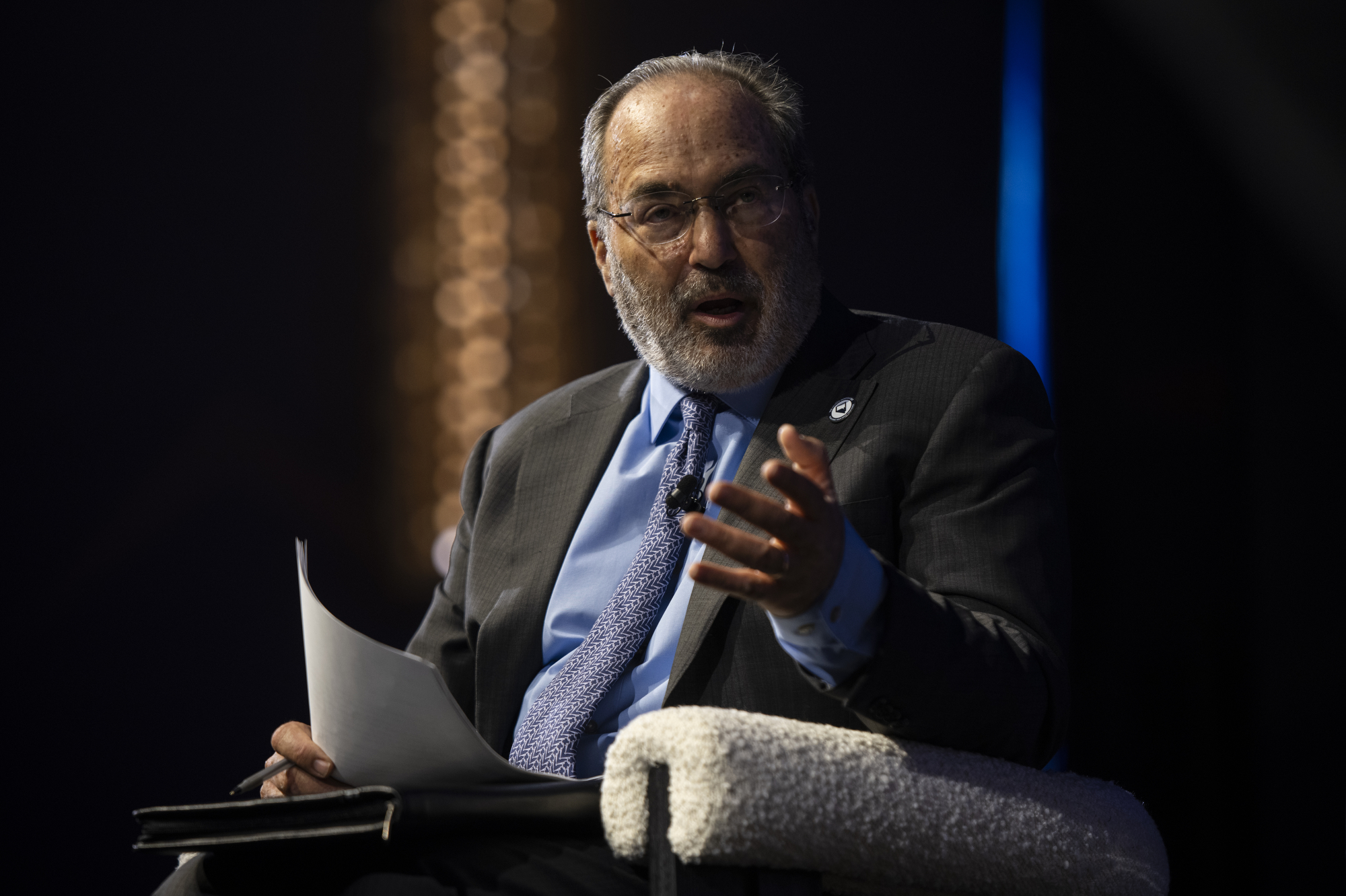Ask the Editor: Jon Ralston talks early voting turnout, Indy’s race-calling process

Nevada voters are weighing in on the first Las Vegas mayoral race to not feature a member of the Goodman family in 25 years, a pivotal GOP primary for U.S. Senate and a host of other key races during the primary.
But with a week before polls close, there don’t appear to be many voters.
As of Monday morning, data from the secretary of state’s office indicates only 6.9 percent of registered voters had voted early, either in person or by mail, with Democrats holding an advantage.
How much stock should go into these early turnout numbers? And does primary turnout even matter come November?
On Monday, two Indy reporters checked in with CEO and Editor Jon Ralston, who has been tracking and analyzing the daily releases of turnout data through his early vote blog.
Read below for Ralston’s thoughts on the low turnout, high mail volume, his explanation of how The Indy will be calling races next week, one election storyline he’s particularly interested in and why he likens many registered nonpartisans to “zombie voters.”
This conversation has been edited for length and clarity.
Tabitha Mueller: Why do we track early voting turnout? What information does it offer?
Jon Ralston: Well, it's much more valuable in the general election than it is in the primary election because in the general election, you can track partisan turnout. And that is generally indicative of what's going to happen in the election, if there's a pronounced difference, or if there's a significant registration and turnout lead by one party or if it goes against the norms.
In a primary, it's not as useful except the people are interested in numbers.
Eric Neugeboren: It's been interesting to see in your early voting blog just how low turnout has been so far. How much weight are you putting into this? What does it indicate for the primary? And do you think voters are not as engaged, or if this is pretty typical for presidential year primary?
Ralston: Well, one thing that makes it difficult, Eric, is that voting has changed in Nevada over the last few cycles, in that there's a lot more mail once we went to everyone getting mail ballots. But that has not boosted turnout, appreciably.
It's not that much different from 2022. What has surprised me a little bit is that Republican turnout is not higher. Maybe that just shows that most people are not as crazy as we are and [don’t] care much about Sam Brown versus Jeff Gunter (U.S. Senate), or [David] Flippo versus John Lee (Congressional District 4) , or even that crazy primary in [Congressional District] 3, or any of these legislative primaries that have really heated up.
It'll be interesting to see if that changes in the second week of early voting. And it'll be interesting to see if Election Day turnout among Republicans is juiced at all by the fact that Trump is coming to Las Vegas this weekend to kind of excite the faithful, and whether that translates to primary turnout. I don't know.
Mueller: You wrote that more than three-quarters of all voters who cast ballots have done so by mail, including 83 percent of Democrats and 67 percent of Republicans. Are you surprised by any of this data?
Ralston: It is quite high. And there was a lot of messaging, as you know — high-ranking Republicans don't trust mail ballots, don't vote by mail. But I don't know how much of that has seeped down into regular voters. And people like voting by mail. It's easy, right? And especially if you buy the proposition that people are not that interested in the primary, but they have a mail ballot in front of them that's so easy to fill out, and there aren't that many races, they're just going to fill them out.
The Democrats are turning out in much greater numbers by mail than Republicans and greater numbers overall, even though the turnout is low. And what's there for Democrats to turn out for? Are they all interested in who the next mayor of Las Vegas is or some judicial race? I don't see it.
Mueller: Is there anything else you think is important to know about the data that we're looking at for early turnout, especially as it relates to the primary?
Ralston: One is the Las Vegas mayor's race where Victoria Seaman, who is a Republican and appealing to the Republican base. If she can get a decent turnout, which she is, I think that increases her chances to move through. The top two candidates move through in that primary unless someone gets 50 percent plus one, which is highly unlikely.
Mueller: As far as the race calls, when The Nevada Independent makes a call in a particular race, what factors are editors and reporters looking at or considering?
Ralston: Some of it is experience that I have in doing this, and that some of the editors have as well. But it's also just knowing the total votes that are out there. In other words, someone could have an insurmountable lead after the first results come in, which are all the mail and early votes that have been cast. If you know how many votes are likely to be out there and you have a floor and ceiling on that, you can see after the first batch [what] would be an insurmountable lead. It's just math. You can see that the [other] person can't catch up.
Mueller: Thinking about the potential for miscalled races, I mean, is that something that the newsroom takes really seriously?
Ralston: The bottom line is that the buck stops with me, and we're not going to make a call unless I feel comfortable that we should make a call, which is the way it should be. And I'm going to feel very comfortable before I decide to make a call. There's no difference in telling people at 9 p.m. versus telling them at 10 p.m. If you're not sure, wait for the next batch of ballots to be counted.
Neugeboren: Just to put your pundit hat on for a second, what is the one storyline that you're eyeing most closely in next week's primaries?
Ralston: Beyond the fact that if turnout is really low, you could have some screwy results and some upsets, I think that the federal races, despite some recent data, are probably going to go the way we think they are. I am very, very interested in whether Gov. Joe Lombardo's candidates get through in those primaries, because that's going to set the tone for the general, because if some of the other candidates get through in some of those Assembly races, that's going to really make it much harder for the governor to be able to get the Republicans out of a superminority status in the Assembly.
Mueller: And is there anything else that you think is important to talk about that we didn't ask you or that you think would be good to mention now?
Ralston: Primary turnout has very little correlation to general election turnout. And my guess is that you're going to see both parties send out these press releases about how well they did in turnout, and that it bodes well for the general. It means nothing.
Turnout for the primary will be 20 or 30 percent. Turnout in the general is going to be 80 percent or so. It's a completely different universe of voters, and I think anyone drawing correlations there is really misleading people.
Mueller: One thing we forgot to discuss is nonpartisan voters. Obviously, nonpartisans can't weigh in on these primary races. What does that mean for the general?
Ralston: They can weigh in on nonpartisan races like the mayor's race, for instance, in Vegas, but I don't think it tells you much. I think nonpartisan turnout is going to be much less than what people think it will be in the general, because as I've said many times, a lot of those voters are zombie voters. They're not real voters. They're people who've been auto-registered at the DMV and probably don't even know that they're registered. They're not interested in voting.
That's why a lot of these polls I think, need to be taken with a grain of salt because these national pollsters are looking at the demographics and just using that for the percentage of turnout, nonpartisan turnout is going to be much less than partisan turnout in the general.

